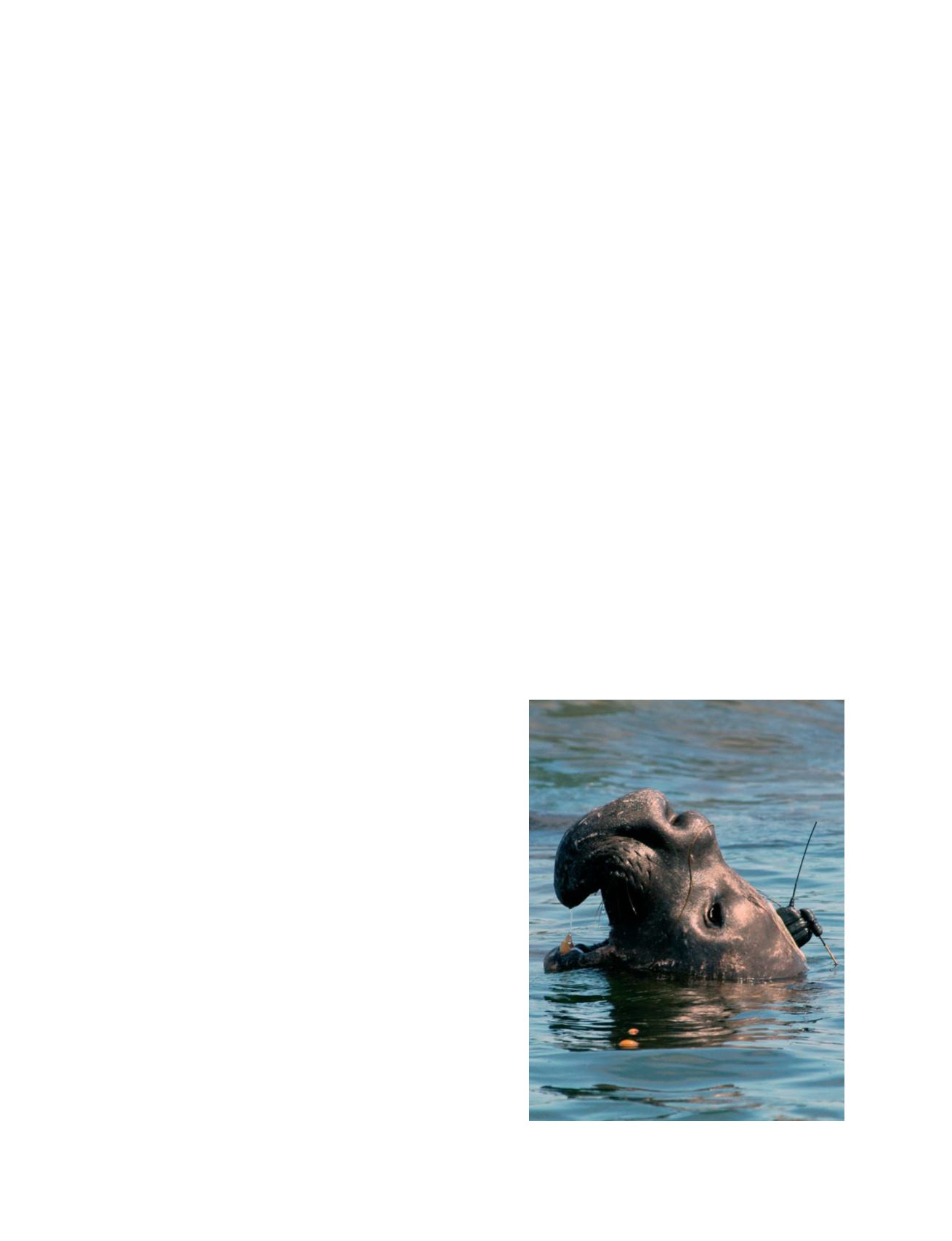

[
] 270
technology for future marine biological monitoring
systems.
The UN General Assembly has called for regular
Global Marine Assessments, and the Census intends that
its realm projects and OBIS will become standards for
these. Similarly, agencies around the world have called
for an ‘ecosystem approach’ to sustainable fisheries
management within their Exclusive Economic Zones.
What could be more important to managing an ecosys-
tem than knowing what lives there?
It is important to note that the Census has been
funded as a research programme. Long-term monitor-
ing of ocean biodiversity will depend on long-term
support within an operational GEOSS framework. By
emphasizing the societal benefits of global systematic
biodiversity measurements and associated data
systems, GEO can bring awareness at the ministerial
level of the green ocean and all life in the sea, and the
critical need for long-term stable funding for these
observations. At the same time, the breadth of GEO
will encourage collaborations among the Census and
related biodiversity programmes to identify and fill
remaining gaps so that the societal benefits of GEO can
be met.
Looking beyond 2010, the Intergovernmental
Oceanographic Commission of UNESCO has initiated
discussions with the Census to develop a strategy for
building a long-term biological monitoring programme.
Such a programme will eventually be an integral part of
GEOSS, and will provide it with the marine biodiversity
data essential to society’s needs.
is defining potential protected areas related to fish habitats, deep sea
corals and predator hotspots and helps to answer the question, ‘what
lives in the oceans?’ The ecosystem data collected through the Census
is being used, for example, to establish areas of reduced fishing in the
Northeast Atlantic. Coral reef information helps gauge the impacts
of rising temperatures and ocean acidity on this habitat. Studies of
past oceanic biodiversity and abundance provide information useful
for management on the status of stocks prior to or in early stages of
exploitation.
The ecosystems on shallower oceanic features such as seamounts
and hotspots, both of which have become targets for unregulated
over-exploitation, are also being studied by the Census. The UN
Convention on the Law of the Sea is still dealing with defining regu-
lations for the shallower parts of the open ocean. Census projects
are providing crucial information and technologies to recognize and
manage these ecosystems.
Forecasting what is likely to happen to ecosystems – what will
live in the oceans – is being carried out by a network of statisticians
and mathematical modellers. Models will focus on sampling design
and assimilate data in order to understand the transformation of
marine life in earlier times to present conditions, and to forecast the
likely future.
Climate
Marine life is sensitive to climate change over a wide range of lati-
tudes; the database developed through Census activities will
contribute to charting its response. The Census has research
programmes in both polar regions that will guide long-term biolog-
ical monitoring beyond the International Polar Year. The Census is
surveying the Southern Ocean to understand the biological diver-
sity of this unique and poorly understood environment. Global
warming is transforming the Arctic sea: the year-round ice realm may
cease to exist within the next 50 to 100 years. The Census includes
an international collaborative effort to inventory biodiversity in the
Arctic sea ice, water column and sea floor.
Status of the Census today; plans for the future
Having begun in 2000, the Census of Marine Life is now in its
seventh year of studying life in the sea. Each of the projects is mature
and providing new insights and information, and OBIS is collecting
and disseminating information as required. Because of its very nature,
this work must continue well beyond the end of currently planned
field and ocean realm projects.
The principal goal of the Census in 2010 is to have a representa-
tive record of global marine biodiversity patterns, available through
OBIS, that can be used to enable commercial, legal and conservation
interests to deal sustainably with ocean biodiversity. For example,
the data in OBIS is proving valuable as nations develop Marine
Protected Areas to preserve biodiversity and increase sustainability
of fisheries. In addition to this information, the Census will provide
legacies of proven technology and science input to management prin-
ciples and international cooperation. Especially important is the
legacy of demonstrating that a coordinated, multifaceted effort to
explore ocean biodiversity can make real inroads on this seemingly
overwhelming but vitally important task.
In 2010, the Census fieldwork will end and its first comprehensive
report on the status of knowledge of marine biodiversity will be
released, with a focus on integration, synthesis and visualization.
The work of the Census will have provided both the knowledge and
An elephant seal with a satellite tag attached
Photo: Dan Costa, University of California, Santa Cruz
S
OCIETAL
B
ENEFIT
A
REAS
– B
IODIVERSITY
















